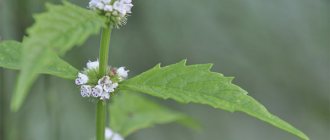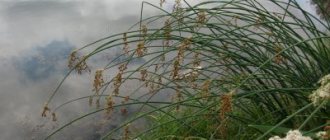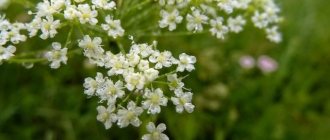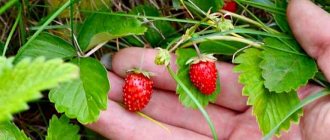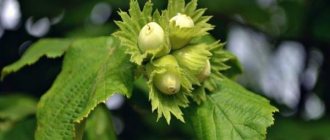Medicinal properties of licorice root:
The roots of licorice glabra contain glycosides, sucrose, glucose, asparagine, starch, proteins, mineral salts, and pectin. Its licorice roots have antispasmodic, anti-inflammatory and expectorant properties.
One of the most ancient medicinal plants, often mentioned in the Ebers papyrus. Licorice was a favorite medicine of doctors in China, India, and Tibet. Later, Greek doctors adopted it. The Scythians supplied them with licorice root, taking in return gold jewelry, expensive fabrics, wine, and olive oil. At that time the root was called “Scythian”. At first, the root was used as a laxative and expectorant, then, with the advent of more effective remedies, licorice began to fade into the background, although Tibetan medicine remained faithful to it. Their treatise “Zhudshi” indicated that it “nourishes,” “gives a blooming appearance,” and “promotes longevity and better functioning of the six senses.”
Millennia have passed, and interest in licorice has increased again. Modern scientists, having studied the chemical composition and deciphered the structure of glycyrrhizic acid, which resembles the structure of hormones produced by the adrenal cortex, have created medicines for seemingly incurable diseases, for example, Addison's disease (insufficient secretion of corticosteroid hormones by the adrenal glands).
Its preparations are used in folk medicine to this day for pulmonary tuberculosis, dry bronchitis, for poisoning with meat and mushrooms, as a diuretic, for chronic constipation, for diseases associated with impaired water and mineral metabolism, for hemorrhoids, stomach and duodenal ulcers, for cancer.
What are the benefits of licorice:
- Treatment of respiratory organs. It increases the secretion of mucus, which helps cough up a large number of microbes from the bronchi. Therefore, it is effectively used in the treatment of dry, prolonged cough with pneumonia, tonsillitis, tuberculosis, and to restore voice with laryngitis;
- It has anti-inflammatory properties, enhances the therapeutic effect of other drugs, enhancing their therapeutic effect, which is why licorice root is added to many medicinal herbal preparations. Helps with feverish conditions;
- It has an antispasmodic effect, relieves spasms of smooth muscles, stabilizes the functioning of the cardiovascular system, supports heart function in pathologies, helps with low blood pressure, and with diseases of the thyroid gland;
- Helps restore pancreatic function by increasing the body's production of its own insulin, which is, in fact, one of the ways to treat diabetes; glycyrrhizic acid, obtained from licorice, is used as a sweetener for diabetes;
- Since ancient times, licorice root has been used as an antidote. Glycyrrhizin, which is part of it, neutralizes the effect of many toxins that enter the body;
- Licorice can suppress the growth and development of cancer cells, which makes it indispensable in the treatment of cancer, as well as prostate adenoma;
- In combination with other herbs, it is used to treat gastritis, gastric ulcers, as a mild laxative;
- Successfully used for the treatment of allergic diseases: eczema, allergic dermatitis, psoriasis, bronchial asthma, urticaria, lupus;
- In small doses, licorice preparations effectively treat inflammatory processes in the kidneys and bladder;
- Used in the treatment of rheumatism, arthritis and other joint diseases;
- It has antidepressant properties, is successfully used to increase the tone of the central nervous system, especially in old age, and reduces fatigue;
- Used to treat radiation damage to the body;
- In the USA and Japan it is used to treat tobacco addiction.
Preventive properties:
- Used to prevent diseases of the gastrointestinal tract, regulate the secretion of gastric juice, prevent heartburn, and improve the digestion of food.
- Regular consumption of licorice root in small quantities (in the form of powder, tea) normalizes blood sugar and cholesterol levels, prevents the development of atherosclerosis, diabetes, and normalizes the functioning of the pancreas and adrenal glands.
- It has a positive effect on the hormonal system, increases the body’s resistance to oxygen deficiency, stabilizes water-salt metabolism in the body, relieves premenstrual pain in women, and normalizes the cycle.
- It is successfully used for the prevention of liver diseases, including the prevention of cirrhosis.
- Strengthens the immune system and helps prevent depression. Ancient Chinese medicine equated licorice root with ginseng root, recommending that older people take it to improve vitality and mood, and to prolong life.
- Pieces of licorice root are recommended to be chewed to prevent caries and inflammatory processes in the oral cavity.
- In villages, licorice decoction was taken as a contraceptive.
Benefits of licorice for the body
Extracts from licorice root are today recognized by doctors and pharmacologists. They are added to medications and used in home medicine. With the correct organization of the approach, products with licorice give the following results:
- Everyone knows the benefits of licorice as an expectorant. It is added to mixtures, syrups, lollipops and mixtures. Depending on the set of additional ingredients, such remedies are used for bronchitis, dry cough, asthma, tuberculosis, laryngitis, pneumonia, and smoker’s cough.
Article on the topic: Bruslina - useful properties, description
Tip: Glycerrrhizin in licorice is similar in its properties to the hormone secreted by the adrenal cortex. For this reason, you should not take medications or even eat licorice candies if these endocrine glands are overactive.
- Licorice can improve the condition of heart and vascular diseases, low blood pressure, and thyroid pathologies.
- By enveloping the gastric mucosa, the product helps protect and restore it. It also has a mild laxative effect, which leads to cleansing of the intestines.
- A natural sweetener promotes the production of insulin, which is useful for diabetes.
- Licorice decoctions can treat gastritis and peptic ulcers. They restore the properties of the pancreas and liver.
- Liquorice is used to treat skin diseases and is used as a cosmetic product. It is perfect for skin whitening and rejuvenation by stimulating collagen synthesis.
- The properties of licorice come in handy for intoxications caused by poisoning. Oncologists recommend it as a means of reducing the risk of developing cancer or slowing down its spread.
- Preparations from the plant stimulate brain activity, elevate mood, relieve fatigue and increase performance.
- Decoctions and tinctures of the plant's root have an antiviral effect and fight fever.
- Substances in licorice can inhibit the activity of certain types of protozoan worms, due to which the body is gradually cleansed.
Traces of licorice can be found in a variety of soft drinks. It is often added to confectionery products, jams, preserves and alcoholic products. Even manufacturers of flavored smoking mixtures often use the product as a spice.
Licorice root contraindications:
- hypertension;
- pregnancy;
- heart failure;
- age up to one year;
- increased activity of the adrenal glands;
- serious liver diseases;
- bleeding disorders;
- predisposition to thrombocytopenia or bleeding.
- Licorice should not be taken together with drugs intended to lower blood pressure and diuretics.
Licorice also has serious contraindications. First of all, it is contraindicated in case of increased activity of the adrenal glands. It should be remembered that this plant increases blood pressure, and this is unacceptable for hypertension. With prolonged and excessive use, diuresis is impaired and swelling increases. It cannot be used if you have heart failure. In some patients, it causes irritation of the mucous membrane of the digestive tract.
When treated with licorice, disorders in the sexual sphere are also observed - weakening of libido, development of gynecomastia, swelling of the mammary glands, limitation or disappearance of pubic hair. It is capable of retaining fluid in the body. Cannot be used if you are obese or pregnant.
In addition, it should be remembered that treatment with medicinal herbs requires compliance with THESE RULES:
Treatment of various diseases with licorice root:
Licorice roots are widely used in the treatment of cough, disorders of the gastrointestinal tract, gastric and duodenal ulcers, etc.
Licorice for constipation:
Its root, which has a mild laxative effect, is prescribed to treat constipation most often in combination with other herbs.
Recipe 1:
Mix 1 tablespoon each of chamomile flowers, marshmallow roots, creeping wheatgrass rhizomes, and licorice roots.
Pour 1 tablespoon of the mixture into 1 cup of boiling water. Leave for 30 minutes and strain. Take 1 glass in the evening.
Recipe 2:
Mix 2 tablespoons of licorice herb and 1 tablespoon of snakeweed herb. Pour 1 tablespoon of the mixture into 1 glass of boiling water and leave for 1 hour. Take 0.5 cups 3 times a day before meals.
Licorice root for dry cough:
This plant is prescribed for dry cough:
Recipe 1:
Mix 2 tablespoons of crushed licorice roots, 1 tablespoon each of herb trifidum and St. John's wort herb.
Pour 1 tablespoon of the mixture into 1 cup of boiling water. Leave for 2 hours, then strain. Take 1 tablespoon 3-4 times a day 1 hour before meals or 1.5 hours after meals.
Recipe 2:
Mix 2 tablespoons of crushed licorice roots, 1 tablespoon of centaury herb, 1 tablespoon of dandelion roots. Pour 1 tablespoon of the mixture into 1 cup of boiling water, boil for 5 minutes, then strain. Take 1 glass 3 times a day.
Licorice for nephritis:
Recipe:
Mix 1.5 tablespoons of licorice roots, marshmallow roots and greater celandine herb. Pour 1 tablespoon of the mixture into 1 glass of boiling water, leave for 30 minutes, strain. Take 1 glass 2-3 times a day.
Licorice for tuberculosis:
Preparations prepared from this plant are an addition to the main treatment of tuberculosis.
Recipe 1:
Pour 1 tablespoon of licorice roots into 1 glass of hot water, boil for 10 minutes, leave for 1 hour, strain. Take 1 tablespoon 4-5 times a day.
Recipe 2:
Mix 1 tablespoon of licorice roots with 1 teaspoon of elecampane roots and 1 teaspoon of oregano herb.
Pour 1 tablespoon of the resulting mixture into 1 glass of water and heat in a water bath for 30 minutes. Strain the broth and cool. Take 2 tablespoons 3 times a day. The course of treatment lasts 1 month, after which it is necessary to take a month's break.
Licorice root for stomach ulcers:
Its root is one of the most effective remedies for treating gastric and duodenal ulcers.
Recipe:
Mix 1 tablespoon each of licorice root, small-leaved linden flowers and chamomile flowers, add 1 teaspoon of dill seeds. Pour 2 tablespoons of the mixture into 1 cup of boiling water. Leave for 1.5–2 hours, strain. Take 1-3 times a day, 0.5 cups.
Recipes from Yulia Nikolaeva’s book “Treating the body with herbs. Useful tips and recommendations."
More recipes:
Licorice root for the treatment of prostate adenoma:
Pour 1 tablespoon of roots into 0.5 liters of water, bring to a boil, let simmer over low heat for 10 minutes, strain after cooling. Take 23 glasses 3 times a day 30-40 minutes before meals for 3 weeks. (Then they drink a decoction of burdock roots for 3 weeks - the preparation is the same, and again return to licorice, then alternate with a decoction of burdock root, and so the treatment is carried out alternately.)
For asthma and bronchitis:
30 g of licorice root per 0.5 liter of water, bring to a boil and hold on low heat for 10 minutes, strain after cooling. Take 1 tablespoon 4 times a day.
For arthritis and eczema:
Place 10 grams of the root in an enamel bowl, pour 200 ml of boiling water, heat in a boiling water bath under a tight lid for 15-20 minutes, leave for 40 minutes, strain, add boiled water to the original volume. Take 1 tablespoon 4-5 times a day, regardless of meals.
Recipes from the book “Plants – your friends and foes” by Rim Bilalovich Akhmedov:
Licorice syrup - how to take for cough: dosages
The dosage of the medicine depends on the age of the child
Directions for use require correct dosage of the dosage form. A single dose of syrup for adults and children of different age categories is different. As a rule, a dosing spoon is included in the medicine package for convenient measuring of the medicine.
Doses for adults:
1 dessert spoon (10 ml) is dissolved in 12 glasses of water. Take 3 times a day. Treatment lasts 7-10 days.
Doses for children:
- children under 2 years old - 1-2 drops of syrup diluted in a teaspoon of water, taken 3 times a day
- children from 2 to 12 years old - 12 teaspoons of syrup diluted in 14 glasses of water, taken 3 times a day
- children over 12 years old - 1 teaspoon of syrup diluted in 12 glasses of water, taken 3 times a day
IMPORTANT: Licorice syrup is prescribed to children after 12 months.
More on the same topic:
6 comments
- Zoya writes, You can’t drink it for a long time. but it doesn’t help quickly... if the cough is severe, it’s better to treat yourself with something like Gedelix, otherwise you can harm yourself
- Victoria writes:
I give my child Gedelix, he likes the taste and drinks it with pleasure. Then the sputum begins to clear well, and since it is also antimicrobial, the general condition improves. At the same time, I give a lot of hot milk with honey, inhalations with herbs or soda, mustard plasters on the chest, teas with licorice - and you can do without jocet and antibiotics! - Oksana writes,
I don’t like licorice, Gedelix has been used in treatment more than once, it really works, but why do they write here in the comments that it contains mint oil? The composition contains only ivy, which is why it is safe even for small children. - Rimma writes,
My mother treated me with licorice many times as a child, and I accidentally remembered about it when I started having a cough, I was horrified that I tolerated it well as a child, but now I drank it and a rash appeared on my body, then I read it , it turns out that he has many side effects, I started taking Suprastin right away, and the pharmacist advised me to treat the cough with Gedelix, she said that he had no allergic reactions, and continued treatment with it. - Tata Writes,
The taste is terrible and it’s impossible to drink, although it removes the phlegm quite well. But I have to take Gedelix for 400 rubles because it has a super effect and is delicious - Ira writes,
Licorice is not at all effective and tastes terrible, of the pharmaceutical drugs I liked the Gedelix drops on ivy the most


